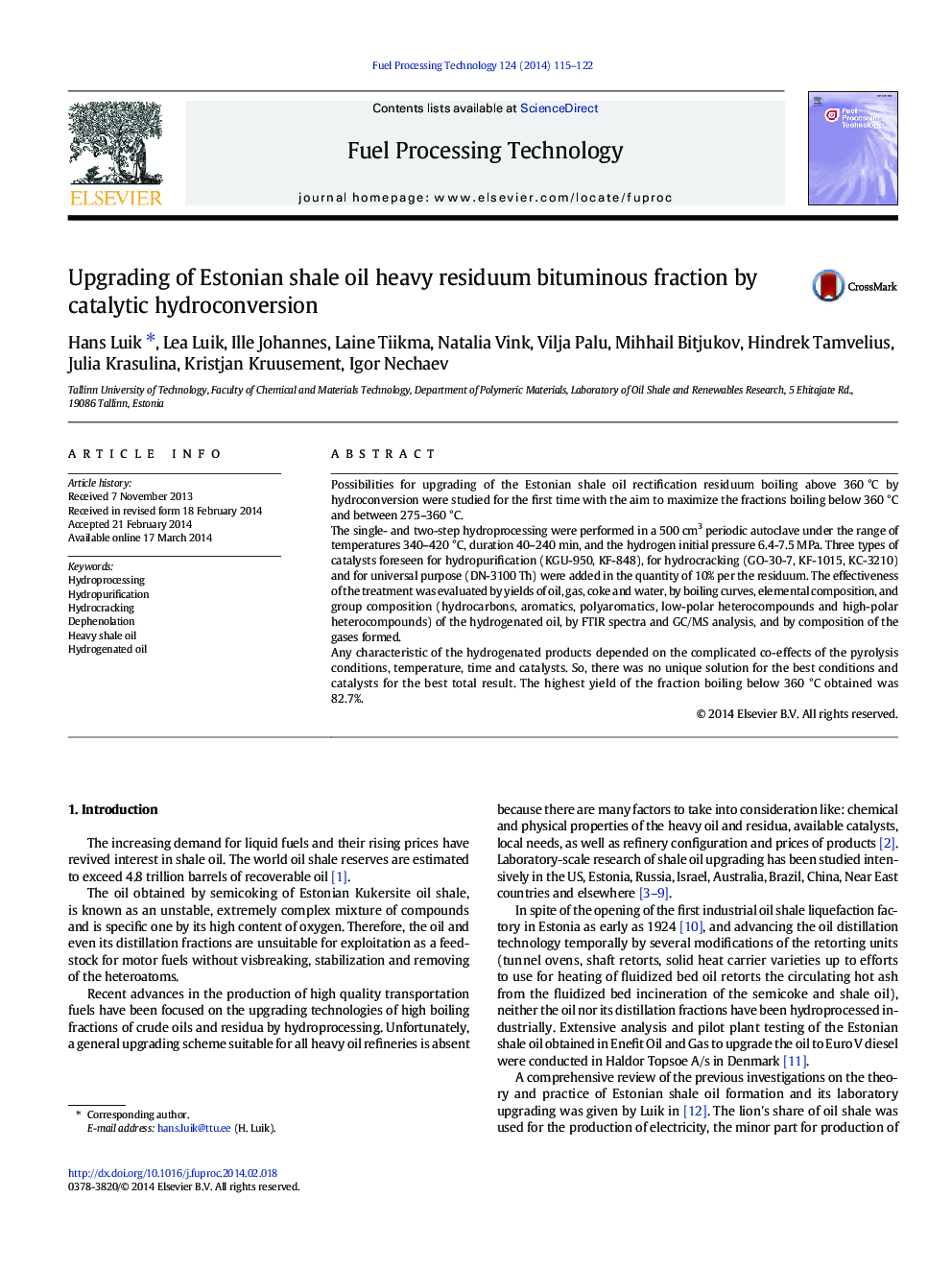| کد مقاله | کد نشریه | سال انتشار | مقاله انگلیسی | نسخه تمام متن |
|---|---|---|---|---|
| 209651 | 461679 | 2014 | 8 صفحه PDF | دانلود رایگان |
• More than 70% of the residue was hydrogenated into liquid fuels boiling below 360 °C.
• The highest yield of the fraction 200–360 °C was obtained using the catalyst KF-848.
• Dephenolation before hydroprocessing does not improve efficiency of the upgrading.
Possibilities for upgrading of the Estonian shale oil rectification residuum boiling above 360 °C by hydroconversion were studied for the first time with the aim to maximize the fractions boiling below 360 °C and between 275–360 °C.The single- and two-step hydroprocessing were performed in a 500 cm3 periodic autoclave under the range of temperatures 340–420 °C, duration 40–240 min, and the hydrogen initial pressure 6.4-7.5 MPa. Three types of catalysts foreseen for hydropurification (KGU-950, KF-848), for hydrocracking (GO-30-7, KF-1015, KC-3210) and for universal purpose (DN-3100 Th) were added in the quantity of 10% per the residuum. The effectiveness of the treatment was evaluated by yields of oil, gas, coke and water, by boiling curves, elemental composition, and group composition (hydrocarbons, aromatics, polyaromatics, low-polar heterocompounds and high-polar heterocompounds) of the hydrogenated oil, by FTIR spectra and GC/MS analysis, and by composition of the gases formed.Any characteristic of the hydrogenated products depended on the complicated co-effects of the pyrolysis conditions, temperature, time and catalysts. So, there was no unique solution for the best conditions and catalysts for the best total result. The highest yield of the fraction boiling below 360 °C obtained was 82.7%.
Journal: Fuel Processing Technology - Volume 124, August 2014, Pages 115–122
